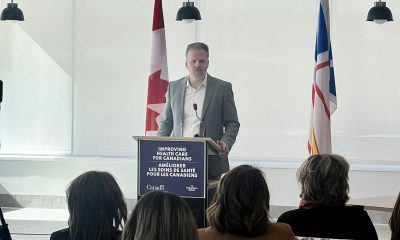Breaking
The greater challenge facing the ALS Association’s ‘ice bucket challenge’
You would have to be living under the largest rock in the most remote of areas to not notice video after video of people being doused with icy bucketsful of cold water, flooding your Facebook homepage and other avenues of social media.
Celebrities, common folk, politicians, the young and the old – people from all walks of life – have jumped on the #icebucketchallenge bandwagon. Not because they are attention-starved, but because they have chosen to get behind a good cause: fund and awareness raising for amyotrophic lateral sclerosis (ALS) disease.
Also known as Lou Gehrig’s disease, ALS affects nerve cells in the brain and spinal cord. The ice bucket challenge has become an international phenomenon, and has generated a whopping US $ 88.5 million, from July 29-August 26; a mind-blowing amount, compared with US $2.6 million raised in the whole of 2013.
Beyond the challenge the frozen chosen have accepted, however, lies the greater challenge for the ALS Association (ALSA): how will they spend such a huge sum of money? Fortune.com gives us some insight on the matter.
Thad Calabrese, a professor of public and non-profit management at New York University points out that as non-profit organization, the ALSA is not legally required to spend the amount it raised from its viral video sensation. The public, however, especially those who endured the ice and those who made donations, would want to see the association spend the funds and do so wisely.
As such, guidelines for how non-profit organizations should spend the monies donated to them have long been mapped out by charity watchdog organizations such as Charity Navigator, the Better Business Bureau’s Wise Giving Alliance, and Charity Watch. Charities are then rated in accordance with how diligently they observe those guidelines.
The watchdog organizations all agree that the bulk of a non-profit organization’s income should be directed towards “programming;” such as research and education. Charity Navigator has set that percentage at 75; Better Business Bureau at 65%; and Charity Watch at 60%.
Thus far, ALSA has done very well in living up to the expectations and guidelines of the charity watchdogs. Charity Navigator’s most recent report indicates that ALSA earned the highest four-star rating, as it allotted 72% of its fiscal year 2013 income towards programs and services, 11% to administration costs, and 16% to fundraising expenses.
Given the current figure of $88.5-million raised in ice bucket challenge donations, and given Charity Navigator’s requirements, the ALSA would have to spend a huge chunk of money (roughly $63.72-million) on research and education by the end of fiscal year 2014, which is in January 2015, in order to replicate its most recent 72% annual programming expenditure.
ALSA chief chapter relations and development officer Lance Slaughter says the organization doesn’t plan on accepting that challenge.
“When you’re doubling a budget, it can’t be spent all in same year. If a [hypothetical] $3 million organization gets a $10 million bequest one year, there’s no way the members of its board can thoughtfully spend three times as much [in one year’s time],” he said.
“We’re going to work with these watchdog groups. They understand that anomalies take place,” Slaughter added.
If the looming year-end deadline were taken out of the picture, Slaughter says that the ALSA board will be better able to give though and consideration into how to best spend the money to bolster the organization’s current priorities: researching the disease and its potential cures, offering ALS patients the compassionate care they need, and the advancement of public policies that would be for the welfare of people living with the disease.
The ALSA raised $24-million at the end of fiscal year 2013; less than half the amount raised in just one month of the ice bucket challenge.
Slaughter noted that in early August of this year, ALSA –without the full realization of the mind-boggling amount of money the campaign would generate – awarded 21 new grants amounting to $3.5 million to scientists in the United States, the United Kingdom, France, Canada, Switzerland, Israel and Australia.
With the success of the chilling campaign, Slaughter expressed confidence that all these grants – which focus on developing effective therapies for ALS –will remain funded into the next couple of years. Before the challenge became a viral sensation, the ALSA had also planned on opening 11 new ALS clinics on top of its 34 existing clinics that offer multidisciplinary therapies to ALS patients. Slaughter shares that opening the new clinics “was a leap of faith,” but now, the outpouring of donations from across the globe is “an opportunity to provide greater funding [to the clinics].”
Some experts in non-profit management have meanwhile suggested that apart from spending the money on research that shows promise and value, ALSA can set up an endowment-type fund with the ice bucket donations. This would transform what could very possibly be what they call a “one-time donation phenomenon” into a steady stream of income for the future; providing a source of funds for any medical advancements in years to come.
Slaughter pointed out that the ALSA has never had an endowment-type fund before, and while “nothing’s off the table,” setting the ice bucket money aside for future use is not quite in tandem with organization’s mission, primarily because ALS “is a disease that requires urgency,” with those afflicted surviving for an average of only 2-5 years.






















